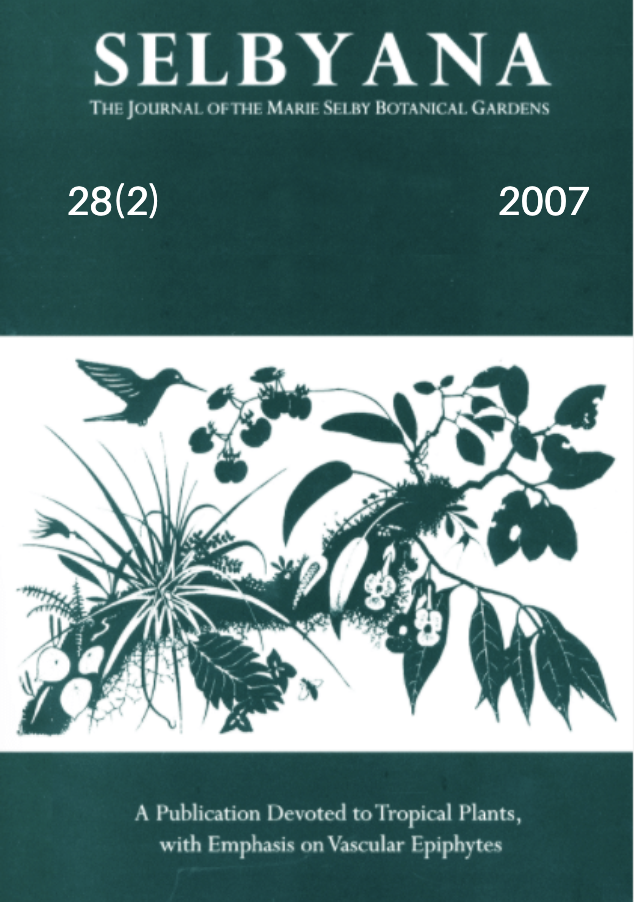Abstract
A survey of epiphytic ferns was carried out in logged and unlogged forests of Kibale National Park. The hundred major host trees were studied by a Single Rope Technique. A total of 5 families, 13 genera, and 24 species were found. Aspleniaceae and Polypodiaceae were the most species-rich families at the study sites. The total number of species did not differ significantly between logged and unlogged forests. There was a weak correlation between the basal area of the host and the number of ferns present. Most species were found growing in light humus as compared to bark and heavy humus as substrates. Most species occurred on the base and mid branch zones of their hosts although there was a wide range of vertical distribution in the logged and unlogged forest. The most similar vertical zones relative to species of ferns present were the base and mid branch regions with Jaccard's indices of 0.673 and 0.781 for the unlogged and logged forests respectively. Selective logging appears not to have led to the decline in the species richness and change in the composition of the epiphytic ferns 28 years following that event.
Open Access and Copyright Notice
Selbyana is committed to real and immediate open access for academic work. All of Selbyana's articles and reviews are free to access immediately upon publication. There are no author charges (APCs) prior to publication, and no charges for readers to download articles and reviews for their own scholarly use. To facilitate this, Selbyana depends on the financial backing of the Marie Selby Botanical Gardens, the hard work and dedication of its editorial team and advisory board, and the continuing support of its network of peer reviewers and partner institutions.
Authors are free to choose which open license they would like to use for their work. Our default license is the Creative Commons Attribution-NonCommercial 4.0 (CC BY-NC 4.0). While Selbyana’s articles can be copied by anyone for noncommercial purposes if proper credit is given, all materials are published under an open-access license with authors retaining full and permanent ownership of their work. The author grants Selbyana a perpetual, non-exclusive right to publish the work and to include it in other aggregations and indexes to achieve broader impact and visibility.
Authors are responsible for and required to ascertain that they are in possession of image rights for any and all photographs, illustrations, and figures included in their work or to obtain publication or reproduction rights from the rights holders. Contents of the journal will be registered with the Directory of Open Access Journals and similar repositories. Authors are encouraged to store their work elsewhere, for instance in institutional repositories or personal websites, including commercial sites such as academia.edu, to increase circulation (see The Effects of Open Access).
